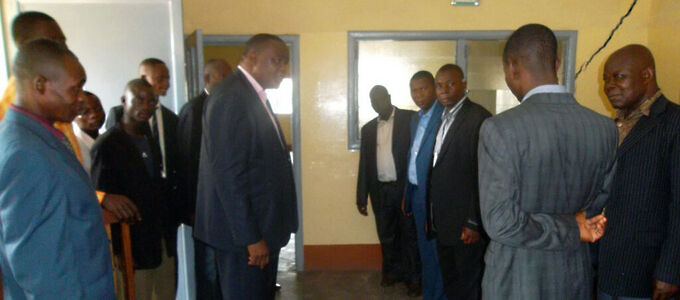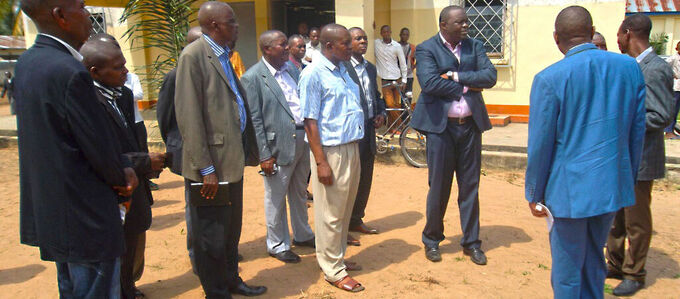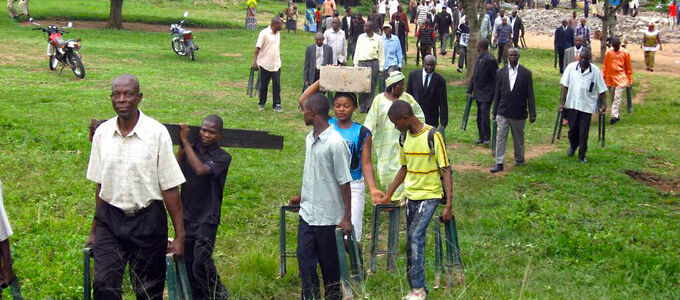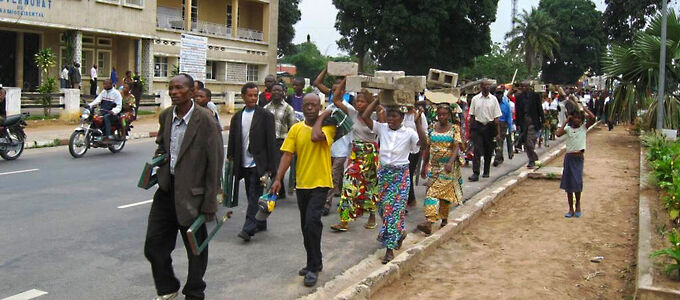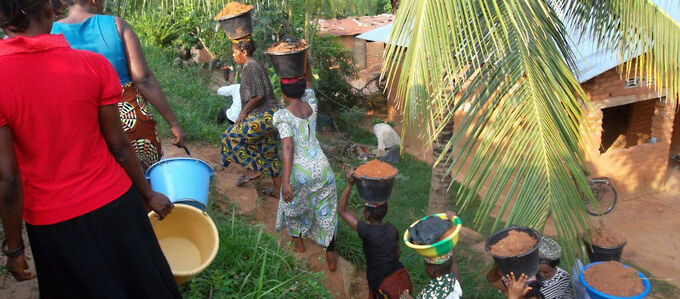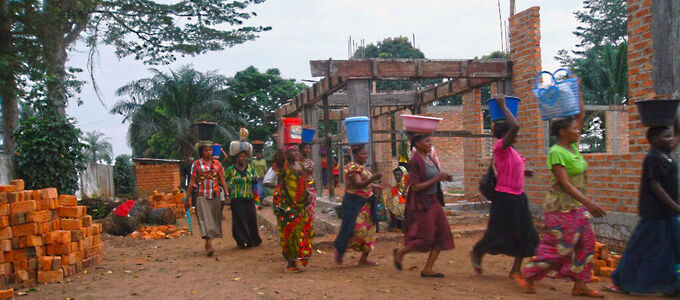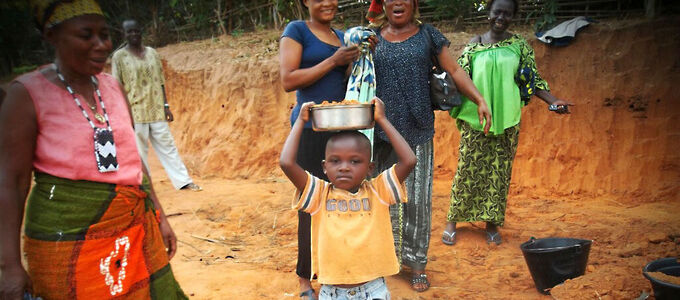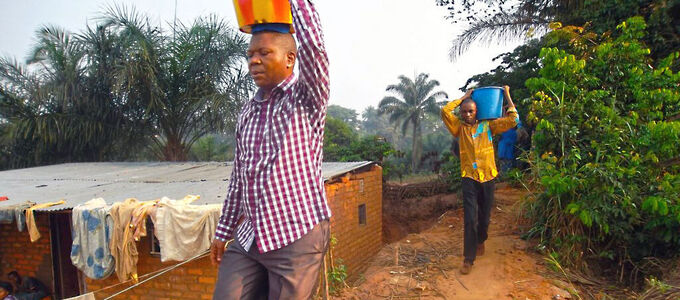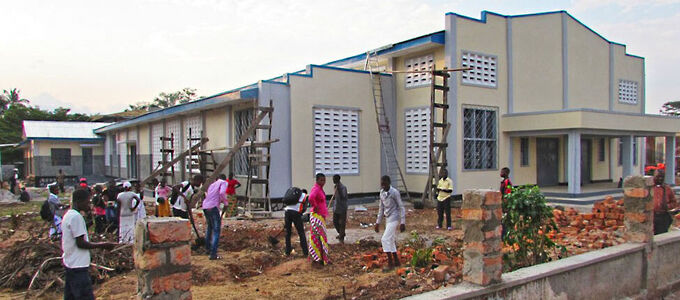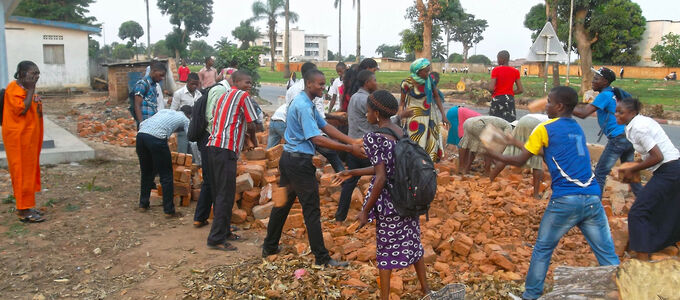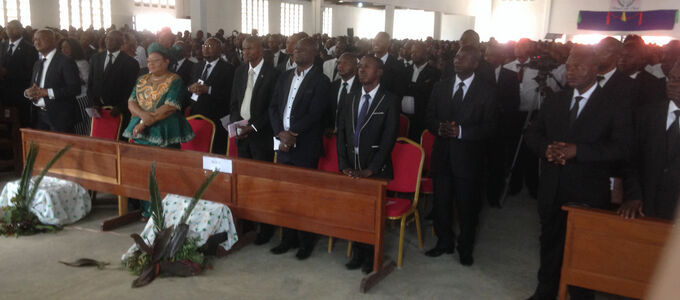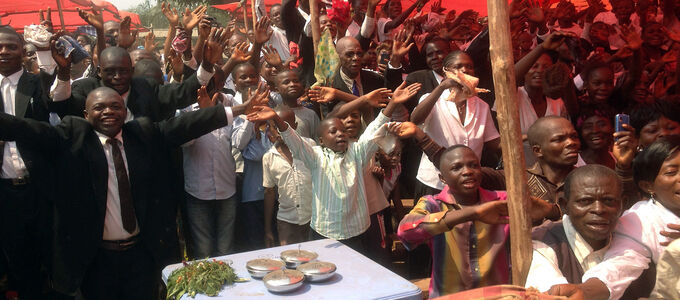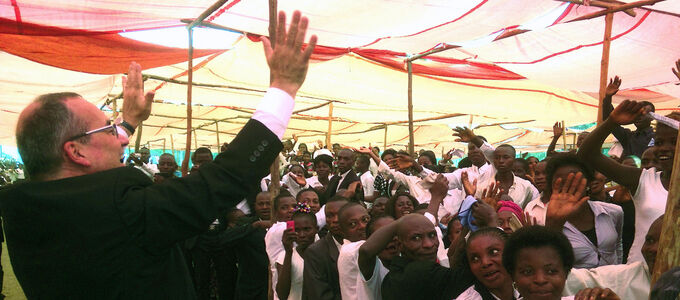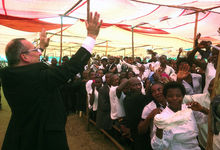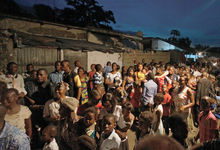Brick by brick: how faith moves a church building
Sure, the ancient Israelites moved around with their tabernacle quite a bit. But that was more like a better tent. The congregation of Kananga, which the Chief Apostle is visiting this weekend, has shown that this how this can actually be done with a solid brick building.
“What are we going to do now?” Ministers and construction experts standing around District Apostle Tshitshi Tshisekedi were just a little puzzled and trying to figure out how they were going to handle the problem. The central church in Kananga was in a bad state of repair. Repeated flooding had led to the erosion of soil, causing massive cracks in the walls.
A fundamental problem…
Kananga is the capital of the province Kasai-Occidental and is located in the south of the Democratic Republic of Congo. The city with its population of half a million is a New Apostolic stronghold in the region. In addition to many smaller congregations, there is also a central church. But there was no money for a restoration, especially since the experts could not guarantee that there would not be any more erosion.
One solution was not all that far away, in the city centre. The Church owns a piece of property there in a prime location, but there was definitely no money for a new church building. The decision taken during the visit to Kananga in May 2014 was final. But something would definitely have to be done.
…and a community-based solution
Then the District Apostle had an idea. The construction experts considered it feasible, the regional Apostles agreed, and the members had the last word. “Sure, we are willing to roll up our sleeves and move our central church.” In essence, this was their answer when they were asked by the District Apostle.
In December 2014 things began to move. Under the guidance of experts, the members started to actually deconstruct their old church. Young and old, men and women, members and ministers alike—thousands pitched in and carried every brick and beam of their old church to its new location eight kilometres away. There was no heavy machinery; everything was done manually, and carried by hand or balanced on their heads.
An unexpected setback…
The move lasted a month and seven days. And all the while the people sang: “We always sing when we work together. It is the best way to motivate each other,” District Apostle Tshisekedi reported at the time. So for weeks, New Apostolic songs rang through the city’s streets. The population as well as city officials were impressed how the “Néos” went about their work.
At the end of January 2015 there was a setback. The new piece of land was known to be uneven, but the slope turned out to be steeper than originally planned for. But not even this could really stop the project. More sand would be needed to level the ground. So the brothers and sisters started to bring tons of sand to the site in buckets and bowls, balancing them on their heads—from a pit six kilometres away.
…and the amazing result
Members also volunteered to help at the construction site, under the guidance of professional construction workers. This was how, by the end of October 2015, a new church came into being with the building material from the old church. Professional construction workers and additional material that was needed were not free, but the bottom line was that the joint effort saved about 45 per cent of the costs.
“Let me tell you how thankful and amazed I am,” Chief Apostle Jean-Luc Schneider said when he visited the new central church for the first time in July 2016, almost exactly seven years ago. “You not only built a church but you gave wonderful testimony of your faith.”
Following the report on nac.today, people from around the world expressed their amazement in the social networks. “This is really moving, literally,” one young woman wrote on Facebook. Others posted “Chapeau”, “I’m impressed!”, “Amazing!”, or “Wow, wow, wow!” at the time. And a brother from Cameroon wrote, “Faith is not only able to move mountains but also churches.”
Article info
Author:
Date:
Keywords:
Andreas Rother
21.07.2023
Democratic Republic of the Congo,
Congregational life



